The town of Simnas is established in a picturesque location near two lakes – Giluitis and Simnas. There are four more lakes in the area: Žuvintas, Atesninkai, Angininkai and a part of Dusia.
Historians are still debating about the first mention of the name of Simnas. Some state that it was first mentioned in 1382, others – in 1494. No matter, which of these is correct, Simnas still remains one of the earliest settlements in Užnemunė area. Life here became more active during the first decades of the 15th century. A manor of the Grand Duke of Lithuania was established here. In 1520 the town built a renaissance-style church. In a document of 1549 Simnas was already mentioned as a town. In 1626 it was granted Magdeburg rights and its own coat of arms. The image of St. Paul, chosen for the coat of arms of Simnas, is undoubtedly related to the name of Povilas Sapiega, who obtained the rights of autonomy for the town. In 1770 the town's coat of arms already featured two saints – the apostles Peter and Paul. It remains unknown, who suggested that and why. On 29 June 1999 the town restored its original coat of arms and it was approved by a decree of the President of Lithuania. It features St. Paul in silver shirt and a red cloak, standing against a silver background. His right hand is resting against a silver downward sword with a golden grip and in his left hand he is holding a golden book of Gospels. His body features natural colours with silver beard and hair, as well as golden nimbus and sandals.
Back in the 17th century. Simnas had four streets: the modern-day Alytaus Street, the street that took to Meteliai, the third street that passed on the western side of the church and the fourth, passing on the northern side. At that time the town had a bakery, a brewery, a granary, a sauna and a grove of cherries, stretching from the mill to the church. In the early 20th century. showed off paved streets and large markets, which used to take place every Tuesday and Friday. That was also indicated in the press of the time as well: 'The town is very neat with lively trade and paved streets everywhere.'
During the Soviet era Simnas was the district and later – vicinity centre. Today the town is the centre of the neighbourhood.
The historical centre of Simnas is an urban monument. A number of the town's buildings from the early 20th century. survived to this day.
The Legend of the Origins and Name of Simnas Town A long time ago, there lived two good giants – Simas and Sinas. They came together and decided to pick a town to build a very beautiful church and help its citizens. However, they looked around, but couldn't find an appropriate hill. Then one of them started bringing soil from the east and the other – from the west. They poured a hill and the holes that they took the soil from have now become the lakes of Simnas and Giluitis. When they were done, they treated each other to some tobacco, shook hands, poured a handful of treasures into the lake each and went their ways: one of them – to do some hunting, and the other – to do some fishing. The townsfolk, grateful for the giants, who took care of their town and became their friends, named their town with a combination of their names – Simnas. Meanwhile the lakes with the treasure, sown by the giants, keep attracting locals and travellers even today.
Interesting Facts The fact that Simnas was quite a large town is also illustrated by a message, printed in an issue of Lietuvos Aidas newspaper in 1939, stating that during the renovation of Simnas church, workers had found what looked like sewers: 'The sewers consisted of two large hollow oak trunks, which managed to survive in the soil quite well through all this time. These ancient sewers must be rather old, because various documents in the church archives, dating back to the late 18th century. didn't seem to have mentioned anything about building sewers. Thus, it could have been built 200-300 years ago. What is interesting is that the oak pipes (if you can refer something with one open side as a pipe) were built namely in the location, which was planned for the sewers in the modern-day renovation plan. At one place under the church foundation there is a spring, which significantly burdened the renovation works. This spring is now connected to the modern sewage piping.'
The ever-charming St. Mary’s Accepting to the Heaven Church (Kreivoji str. 3, phone: +370 315 60 260) was built in Simnas in 1520, initiated by Jonas Zaberezinskis. In the 19th century. Simnas was visited by numerous foreign researchers of renaissance, wishing to see and enjoy the view of this pearl of architecture. This is the oldest building in Užnemunė area and the only basilica-type cross-shaped renaissance church in Lithuania. One early 20th century. newspaper wrote that it 'the thick and high walls of the church create an impression of a fortress'. The church is also full of valuable ecclesiastic art. There is an altar of the Blessed Mary of Rosary with a painting of the Blessed Virgin Mary. Visiting it on Sunday before St John's Day or any other of the next 7 days, may pardon all sins, while visiting it on any other day – pardon them for 300 days. In 1928 the altar has been privileged by the bishop of Vilkaviškis. On the right of the church there is the Stone of Shame. In 1655 the church was severely damaged by Russian troops. The French troops were no better: in the early 1812 they turned the church into a hospital and, on their way out of Lithuania, broke all windows, benches and damaged the organ. The church has also suffered several fires. Therefore, the building has undergone several capital renovations. Simnas church has been included into the Register of Immovable Cultural Properties.
The historical square of Simnas features a monument for the children of Simnas, scattered all over the world, partisans, those who died in battle, were tortured, murdered or exiled, opened in 2010 (author A. Kmieliauskas). The 3.8 m woman's figure symbolises the difficult experiences of Lithuania. The woman could be a mother, a sister, a friend or a wife. The child, snuggling against the woman's legs, creates even more uncertainty about the future.
Simnas Cemetery features two monuments in memory of the Lithuanian partisans. The monument in memory of the partisans that have died in battle in Liepakojai village on 21 February 1945 was built on the southern side of the cemetery on 20 October 1990. The bodies of the partisans were brought to the central square of Simnas for public display. Later they were buried in a mass grave in Simnas Cemetery. The monument features the names of the dead and an inscription 'FOR THE LITHUANIAN PARTISANS, WHO DIED FOR THEIR HOMELAND'. Another monument for the partisans, featuring their names, is built in Liepkojai village at the place of the battle.
The majority of partisans, who died in Kalniškė battle (Kalniškė forest is not far from Simnas) on 16 May 1945, were buried behind the cemetery, near Lake Simnas. On 23 June 1989 the remains were transferred to Simnas Cemetery (with the former burial site marked with a cross). Other bodies of partisans of Dainava district, who died in Simnas surroundings and were brought to the same burial site from Žuvintas marshes, were transferred as well. The monument was built of stones, gathered from Lithuanian fields, where these battles took place. It was opened on 19 May 1990 and features the names of the partisans and the inscription 'FOR LITHUANIAN PARTISANS, WHO DIED FOR THE FREEDOM OF THEIR HOMELAND'.
Synagogue of Simnas (Vytauto str. 34) Closed. Build in the early 20th century. On the right side, second floor, there was a Jewish school, while the room for prayer with an altar was designed in a way that the people praying inside would be always facing the main sanctuary in Jerusalem. After World War II the synagogue was turned into a culture centre and a sports hall.
Monument for Jews, executed in Pošnelė forest. Jews had settled in Simnas in the early 17th century. Expected to invigorate trade and business, here they were provided everything they needed for their settlement. They got on with the locals quite well. During the years of the World War II, on 12 September 1941 Germans executed 414 Jewish men, women, children and seniors in Pošnelė forest. The monument in memory of these people was built in 1965 (author – V. Krušna).
Žuvintas biosphere reserve. Žuvintas bog and lake make the largest wetland in Lithuania (6940 ha) – it is a true kingdom of the nature and wild birds. For many rare species of birds, other animals, fungi and plants that have settled here or stay here during migration, Žuvintas' surroundings is one of the most important locations in Lithuania.
Lake Žuvintas is probably the shallowest lake in the country, overgrown with reed and cat’s-tails, making a perfect nesting environment for largest populations of the great bittern, western marsh harrier, little crakes, as well as many other interesting and protected species. Thousands of cranes and geese, passing by, stop to have a rest at the reserve.
The first biosphere reserve (18 4090 ha) to protect the nature of this area was established in 2002. It has been included into the network of UNESCO reserves under the Man and Biosphere Programme.
It should also be noted that the middle part of the biosphere reserve – Žuvintas Natural Reserve – is the first protected territory in Lithuania. It has been established in 1937 by the initiative of Professor Tadas Ivanauskas from Kaunas Vytautas Magnus University. Back in the day Lake Žuvintas was protected for the abundance and variety of birds that nest there.
Near Lake Žuvintas there is a cognitive path with an observation tower. The visitors' centre has a modern exposition, introducing the variety of fauna and flora of Lake Žuvintas and its surroundings. The museum on the Lake's Evolution has even more interesting things to show. Žuvintas Biosphere Reserve organises an event of farewell to the migrating birds.
Near the building of the directorate there is a memorial sign for the partisans of Dainava Military District, who died in the territory, which is a part of the reserve today, in 1945-1948.
Visitors' Centre and Directorate of Žuvintas Biosphere Reserve, Kampelių str. 10, Aleknonių Village, Simnas Neighbourhood, Alytus District, phone: +370 315 49 540 www.zuvintas.lt
Atesninkai Mound, sometimes also referred to as Atesninkėliai and Pilalė, is located near Atesninkai I village. It has average slopes, overgrown with bushes and an occasional pine. The mound dates back to the first half of the first millennium. It's quite difficult to find.
Bambininkai Mound and settlement. According to a legend, this mound is the final resting place of the last worshipper of Perkūnas – the gravehole had been dug for him while he was still alive.
The mound is also referred to as Ąžuoliniai, Ąžuolų Ragas and Dambavaragis. It is located on the left shore of Bambena. The mound has an oval top with a cultural layer, featuring moulded and thrown ceramics. In some places the slopes are 6-7 m high. At the foot of the mound to the south and west there was a 2 ha settlement. Archaeologists have found pieces of striped, rough and thrown ceramics.
The mound dates back to the mid. 1st millennium–early 2nd millennium.
Giluičiai Mound and settlement. The mound was built on the left shore of Kriaušys rivulet, on the cape of Giluičiai heights. The slopes are steep (up to 10 m) and the mound itself is overgrown with bushes and fir trees.
At the foot on the northern-west side there was a 0.7 ha settlement, dating back to the first millennium (researched in 1983) with a 1.3 m cultural layer, featuring striped, rough and smooth ceramics. The mound dates back to the first and early second millennium. It's quite difficult to find.
On one of the hills of Mergalaukis, a couple of kilometres away from Simnas, there is the World War I German cemetery with the grave of Lieutenant Ernst Wurche in the middle. This soldier was a friend of the famous German writer and poet Walter Flex and became a prototype of his novel The Wanderer between the Two Worlds. The major action in the book takes place in Simnas and its surroundings. The book has been translated into Latvian, Swedish, French and Italian languages.
By the initiative of the German Bundeswehr reserve troops and with the help of the local community, in 2014, for the occasion of the 100th anniversary since the beginning of World War I, the graves were cleaned.
At the beginning of March every year the city hosts its famous Simnas Fair. While St. John's Day celebration in June is the most fun and enjoyable in the entire region of Alytus.
Lake Giluitis has a beach, where you can stay with a camper.
Authors of photographs: A. Pranaitis, archive of Alytus Tourism Information Centre.



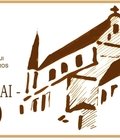
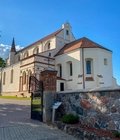
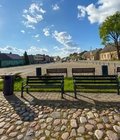
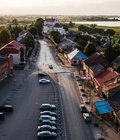
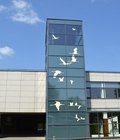
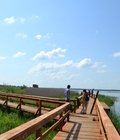
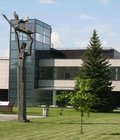
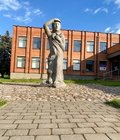
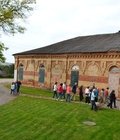
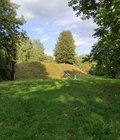
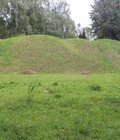
Reviews